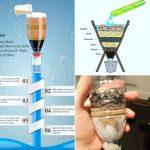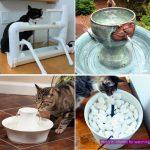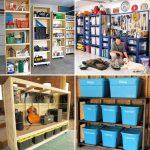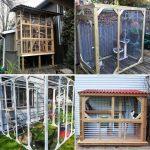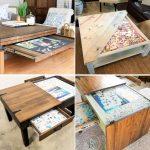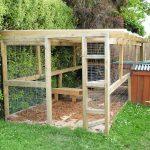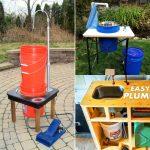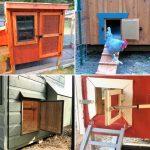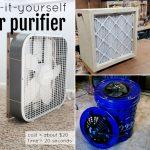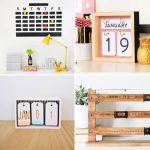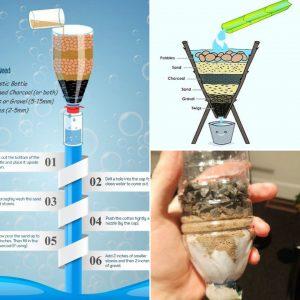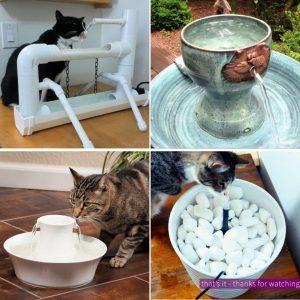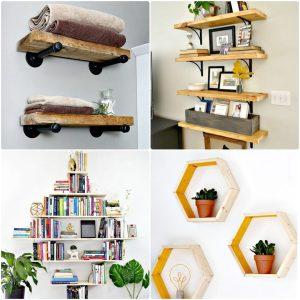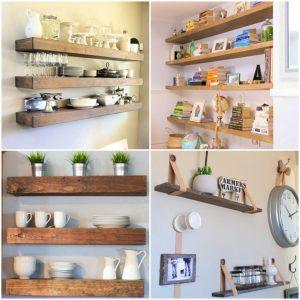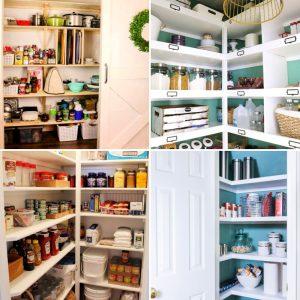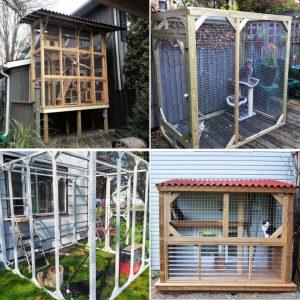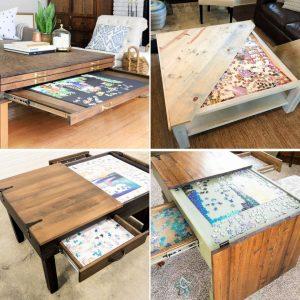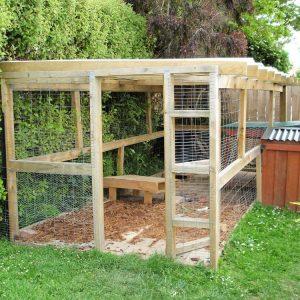Are you considering setting up a rainwater collection system and wondering about the benefits? Exploring 15 DIY rain barrel ideas could be your answer. Learn why building a DIY water collection system is a smart choice and how you can build your own rain barrel with our step-by-step guide. From selecting the right container to positioning tips and maintenance advice, we’ve got you covered. Engage with our FAQs to enhance your understanding of DIY rain barrels.
Delve into a diverse array of 15 DIY rain barrel ideas for crafting your rain collection system. Building your own rain barrel is a step towards sustainable living. Not only does it help in reducing water bills by using a natural resource, but it also requires minimal investment. These DIY water collection systems offer a range of designs with varying storage capacities, catering to different needs. Explore the next section for a comprehensive step-by-step guide on building a rain collector that suits your needs best.
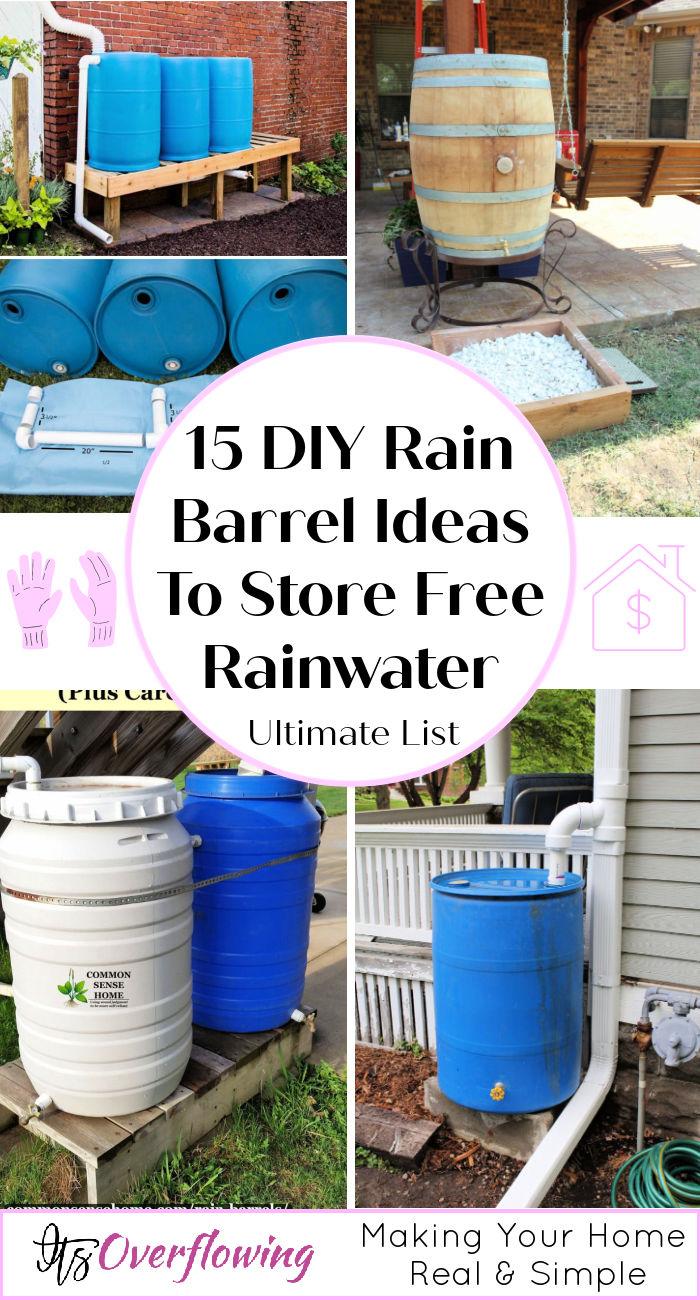
Why Build Your Own Rain Barrel?
Discover the benefits of building your own rain barrel and take a step towards sustainable living. Save water, reduce your carbon footprint, and make a positive impact on the environment.
- Reduced Water Bills: Collecting rainwater helps lower your water bill since you’re utilizing free natural resources for gardening and other outdoor water needs.
- Minimal Investment: Most DIY rain barrel projects are cost-effective, especially when repurposing or recycling materials.
- Water Conservation: Rain barrels contribute to reducing the demand on municipal water and preserving this vital resource.
- Healthier Plants: Rainwater is free of chlorine and other chemicals typically found in tap water, making it better for your plants.
- Simple Setup: Rain barrels are relatively easy to set up with basic tools and some DIY knowledge.
- Low Upkeep: Once installed, rain barrels require minimal maintenance, like occasional cleaning and winter preparation.
- Learning Experience: Building a rain barrel can be a great educational activity for families or individuals interested in sustainability and water conservation.
- Personal Touch: You can paint and decorate your rain barrel to match your garden or home aesthetic.
- Flexible Design: Tailor the size and features of your rain barrel to fit your specific needs and space.
By building a rain barrel, you’re not only helping your wallet and the environment but also gaining the satisfaction of self-sufficiency. It’s a reliable, helpful, and people-first approach to gardening and water conservation.
How to Build Your Own Rain Barrel: A Step-by-Step Guide
Making your own rain barrel is a fantastic way to conserve water, lower your bills, and contribute positively to the environment. Rainwater is excellent for your plants, being free from the chemicals found in tap water. Follow this easy guide to set up a functional rain barrel in your garden.
Choosing the Right Container
First, you’ll need a suitable container. A food-grade 55-gallon drum is ideal. You can often find these through recycling centers or food service companies. Make sure the container is clean and hasn’t previously stored harmful chemicals.
Gathering Your Materials
You will need:
- A large plastic drum or barrel
- A hose bib (spigot)
- Teflon tape
- A downspout adapter
- A piece of window screen or fine mesh
- A drill with a spade bit matching the size of your hose bib
- Silicone sealant
- A few bricks or a strong stand to elevate your barrel
- Optional: A rain diverter kit
Preparing Your Barrel
- Clean the Barrel: Ensure your barrel is thoroughly cleaned out, removing any residue or debris.
- Drill a Hole for the Spigot: About 2 inches from the bottom of your barrel, drill a hole. Wrap Teflon tape around the threads of your hose bib before screwing it into the hole. This will help prevent leaks.
- Set Up Overflow: On the opposite side of the barrel, toward the top, drill another hole. This will be for your overflow. You can attach a hose or an additional piece of piping here to direct excess water away from your foundation.
- Cover with Mesh: To prevent debris and mosquitoes from entering your barrel, cut a piece of window screen slightly larger than the opening of your barrel. Secure it with a strong, waterproof adhesive or a bungee cord.
Positioning Your Rain Barrel
- Find the Right Spot: Place your barrel under a downspout where it can easily collect rainwater.
- Elevate the Barrel: Use bricks or a stand to raise your barrel off the ground. This elevation helps increase water pressure and makes it easier to fill watering cans.
- Secure the Downspout: Adjust your downspout so it directs water into your barrel. You may need to cut it to size or use a flexible downspout extension. If you’re using a rain diverter, install it according to the manufacturer’s instructions.
Maintenance Tips
- Regular Cleaning: Check and clean your barrel and mesh cover periodically to remove any debris.
- Winter Care: In freezing climates, empty your barrel and disconnect it from the downspout to prevent damage.
- Check for Leaks: Inspect your barrel regularly for leaks and seal them with silicone sealant.
Building your own rain barrel is a rewarding project that benefits both your garden and the planet. With just a bit of work, you’ll have a sustainable water source that’s great for your plants and easy on your wallet.
FAQs on DIY Rain Barrel Ideas
Making your own rain barrel system can be a rewarding project that conserves water and saves money. Here are some commonly asked questions to help you get started on your DIY journey.
What is a rain barrel?
A rain barrel is a system that collects and stores rainwater from your roof that would otherwise be lost to runoff and diverted to storm drains and streams. It’s a simple, sustainable way to conserve water and reduce your water bill.
How does a rain barrel work?
Rain barrels are connected to a downspout from your house. When it rains, water flows from the roof, through the downspout, and into the barrel. You can then use this stored rainwater for watering plants, gardens, and lawns.
What are the benefits of using a rain barrel?
- Water Conservation: Rain barrels capture rainwater that can be reused for watering plants, conserving a precious resource.
- Cost Savings: Using rainwater for your garden can reduce your water bill.
- Plant Health: Rainwater is free of the salts, minerals, and chemicals found in tap water, making it healthier for plants.
- Environmental Impact: Reduces stormwater runoff, which can decrease erosion and pollution in our waterways.
What materials do I need to build a DIY rain barrel?
To build a basic DIY rain barrel, you will need:
- A large plastic barrel or drum (preferably food-grade)
- A spigot or hose bib
- Teflon tape for sealing threads
- A drill and spade bit (for building holes)
- Window screen or fine mesh (to keep out debris and insects)
- Silicone sealant
- Downspout adapter or diverter
Can I use any barrel for making a rain barrel?
It’s essential to use a food-grade barrel that hasn’t stored harmful chemicals. This ensures that the water you collect is safe for watering plants. Many people use 55-gallon plastic drums, which are readily available and inexpensive.
How do I maintain my rain barrel?
To maintain your rain barrel:
- Periodically check for and clean out leaves or debris.
- Ensure the mesh or screen is intact to prevent mosquitoes.
- During winter, empty the barrel and disconnect it from the downspout to prevent freezing and cracking.
- Inspect and tighten the spigot as needed to prevent leaks.
Is it legal to use a rain barrel?
In most areas, it is legal to use rain barrels, but some regions have specific regulations regarding rainwater harvesting. It’s always a good idea to check with your local government or water authority to ensure compliance.
Can I connect multiple rain barrels together?
Yes, you can connect multiple barrels together to increase your water storage capacity. This is done by linking the overflow valve of one barrel to the intake of another. Make sure all barrels are on a stable and level surface to prevent tipping or uneven water distribution.
Building a DIY rain barrel can be a simple and effective way to conserve water and support your gardening needs. With these FAQs, you’re now better equipped to start your project.
How to Choose the Right Rain Barrel for Your Garden
Choosing the right rain barrel for your garden is an important step towards sustainable living and water conservation. Here’s a guide to help you select the best rain barrel that meets your needs, ensuring a reliable and people-first approach to gardening.
Understanding Your Needs
Before diving into the vast options of rain barrels, assess your specific requirements:
- Garden Size: The size of your garden directly influences the capacity of the rain barrel you’ll need. Larger gardens may require multiple barrels or one with a larger capacity.
- Water Usage: Estimate your regular water usage for gardening. This helps determine the size and number of rain barrels you might need.
- Space Availability: Consider the space you have available for installing a rain barrel. Ensure there’s enough room and a suitable location near a downspout.
Selecting the Right Container
- Material: Most rain barrels are made of plastic or wood. Plastic barrels are lightweight and less expensive, whereas wooden barrels can be more aesthetically pleasing but require more maintenance.
- Capacity: Rain barrels typically range from 40 to 80 gallons. Your choice should be based on your water usage and space constraints.
- Food-Grade: If you plan to use the rainwater for edible plants, opt for a food-grade barrel that hasn’t stored harmful chemicals.
Key Features to Look For
- Durability: Choose a rain barrel made from UV-protected material to prevent it from weakening under the sun.
- Spigot Quality: Ensure the barrel has a high-quality spigot for easy access to water. Brass spigots are more durable and leak-resistant.
- Overflow System: A good rain barrel should have an overflow valve or hose to divert excess water away, preventing it from pooling around the foundation of your home.
- Mesh Screen: A mesh screen is essential for keeping debris and mosquitoes out of the barrel, ensuring the water remains clean and usable.
Ease of Maintenance
Opt for a rain barrel that is easy to clean and maintain. Some models come with removable lids or openings large enough to reach inside for cleaning. Consider winter maintenance too; if you live in a cold climate, you might need a barrel that’s easy to empty and move.
Aesthetic Preferences
Rain barrels come in various designs and colors. You can choose one that blends with your garden’s aesthetic or even paint and decorate it yourself. Remember, functionality should come first, but it doesn’t hurt to have a rain barrel that looks good too.
Budget Considerations
The cost of rain barrels can vary widely depending on size, material, and additional features. While it’s tempting to opt for the cheapest option, consider it an investment towards reducing your water bills and contributing to environmental conservation. Balance cost with quality and features to find the best value.
Local Regulations and Incentives
Some areas have regulations or offer incentives for rainwater harvesting. Check with your local government or water authority to ensure compliance and to see if there are any rebate programs available for purchasing a rain barrel.
By taking the time to understand your needs and the features that matter most, you can choose a rain barrel that not only saves water but also becomes a valuable addition to your garden.
15 DIY Rain Barrel Ideas To Make Your Own Rain Collector
Discover 15 creative DIY rain barrel ideas to effortlessly collect rainwater for your garden. Save water and money with these easy-to-follow projects!
1. DIY Rain Barrel for Rainwater Collection
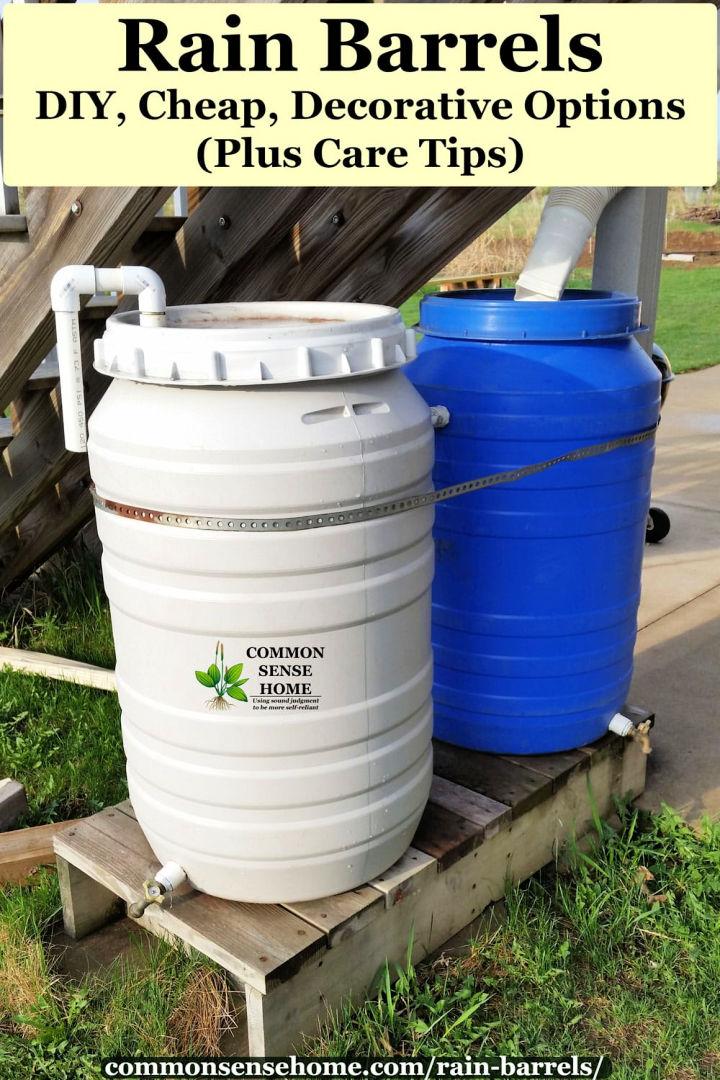
Discover how to make your own rain barrel with helpful tips from Common Sense Home. Our guide details DIY methods for rainwater collection, offering insights into constructing a durable and effective rain barrel system. We emphasize the importance of screens to keep out debris, a sturdy spigot for usage, and a reliable overflow mechanism for safety.
Additionally, we share advice on selecting a strong stand to support the full weight of the water. Maintenance tips, such as preparing for winter storage and cleaning, ensure your system remains functional year-round. For those seeking ready-made solutions, we explore options for affordable and decorative rain barrels. Join us in embracing sustainable water practices for your gardening needs.
2. How to Make a Rain Barrel System
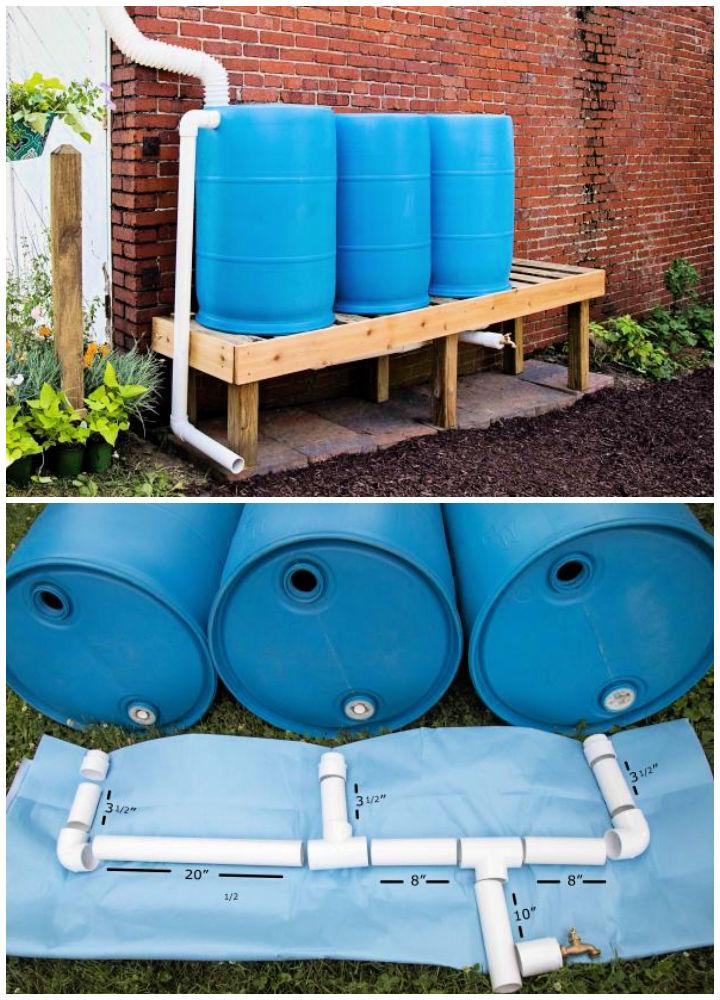
Capture rainwater efficiently and sustainably with a DIY rain barrel system, as explained by HGTV. Perfect for gardeners facing drought or those wanting to reduce water bills, this setup channels water from your roof’s gutter downspout into a barrel. The EPA estimates a 55-gallon barrel could save up to 1,300 gallons during summer.
Plus, rainwater is ideal for plants since it lacks chemicals found in tap water. Before starting, check local laws on rainwater harvesting. Follow our straightforward instructions to build and maintain your eco-friendly water-saving solution, ensuring a level stand and mosquito prevention measures for a safe and effective system.
3. DIY Rain Barrel from a Trash Can
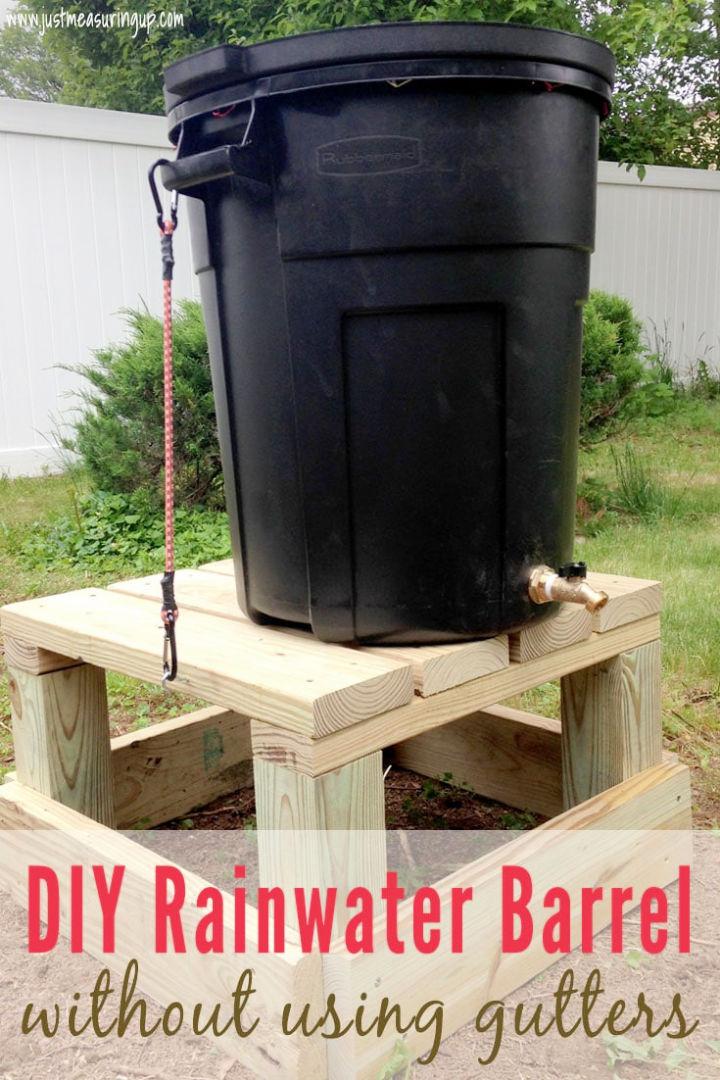
Discover how to make a DIY rain barrel using a simple trash can with the guide from Just Measuring Up. Perfect for garden enthusiasts aiming to conserve water and reduce utility bills, this project is budget-friendly and easy to complete in just an hour. Our step-by-step instructions will help you set up a rainwater collection system that’s not only efficient but also complements your sustainable lifestyle. Get ready to harness the benefits of rainwater with our practical and effective solution for your gardening needs.
4. DIY Rain Barrel Under $100
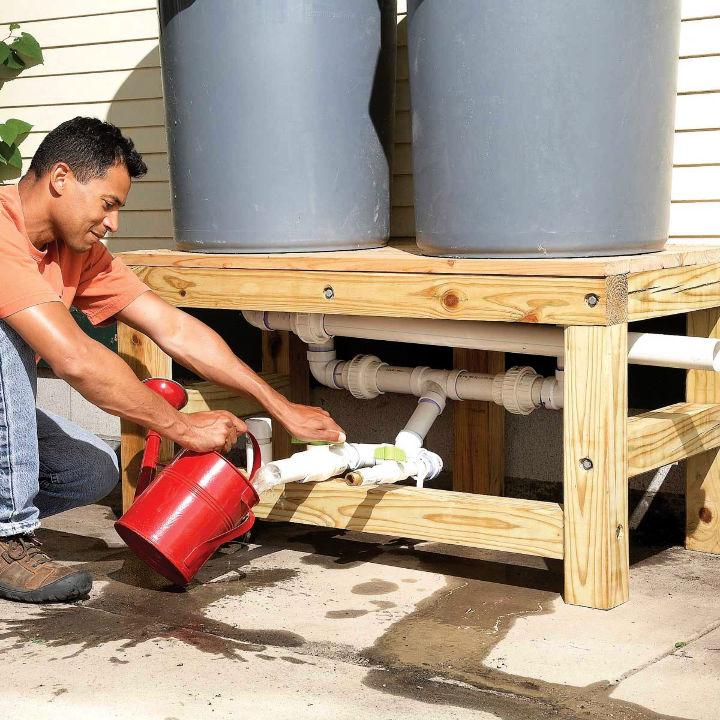
Learn how to construct your own rain barrel with this practical guide from Family Handyman. By building it yourself, you can save money and water, all while contributing to a sustainable lifestyle. A rain barrel collects and stores rainwater from your roof that can be used for gardening and outdoor cleaning. This tutorial breaks down the steps into an easy-to-follow process, including the materials and tools required. Elevate your DIY skills and water conservation efforts with a homemade rain barrel, and get ready to capture the next rainfall efficiently.
5. Making a Rain Barrel with Planter on Top
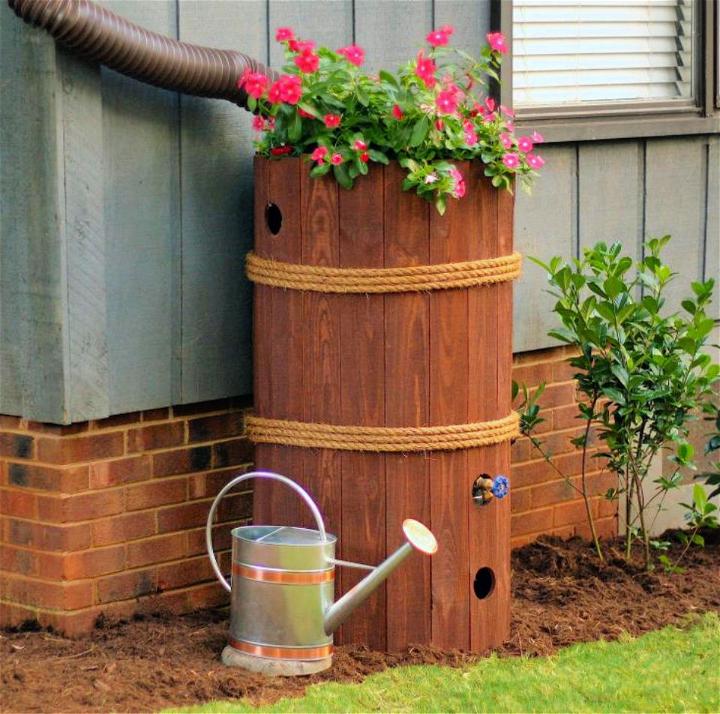
Learn how to conserve water and save money with a homemade rain barrel. HGTV provides an easy guide to repurposing a container into a reservoir for rainwater collection. Ideal for gardening and outdoor use, this project is eco-friendly and practical. Simple steps ensure that even those new to DIY projects can confidently construct a rain barrel. Discover how to reduce your water bill and make a positive impact on the environment with this straightforward tutorial.
6. Plastic Container to Rain Barrel
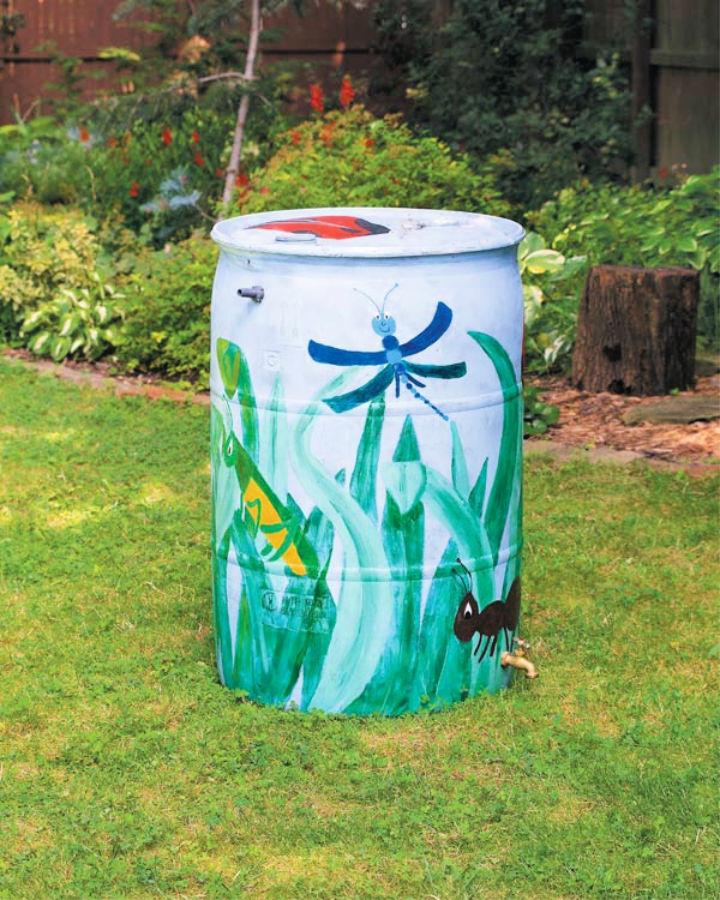
Making your own rain barrel is a smart and eco-friendly way to conserve water for your garden. Empress of Dirt provides a comprehensive tutorial with simple, step-by-step instructions to transform a food-grade plastic container into a fully functioning rain barrel, complete with a hose faucet for easy watering. Before embarking on this DIY project, ensure that local laws permit rain barrel usage.
Once confirmed, gather the necessary materials from a hardware store and follow the guide to save water, money, and give your plants the gentle, warm shower they crave. Remember to elevate your rain barrel for optimum water pressure and to disconnect it before freezing winter temperatures set in. Get creative and personalize your barrel with paint for an added touch in your garden!
7. Rain Barrel Out of Heavy-duty Trash Can
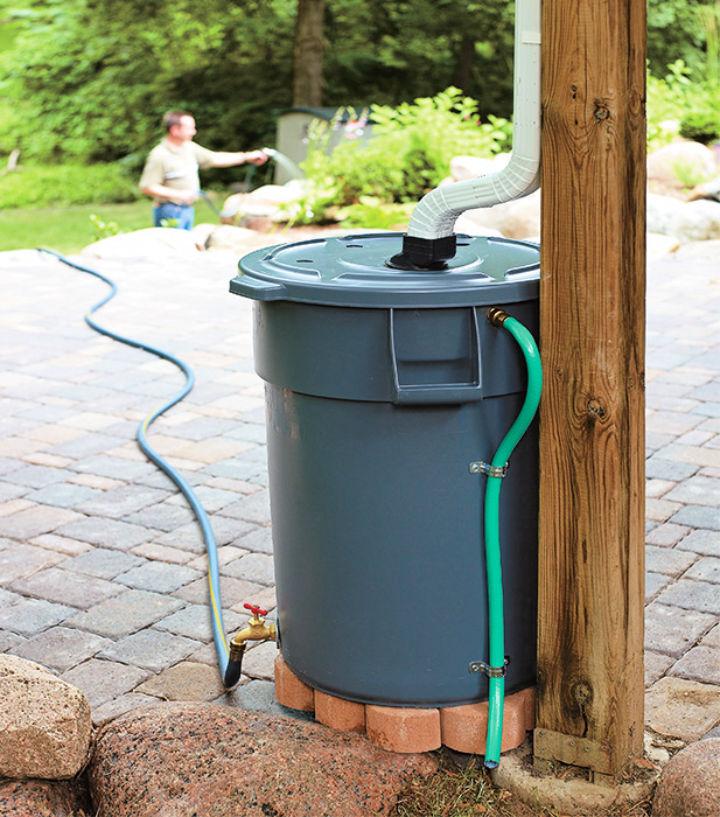
Make your own rain barrel using a heavy-duty trash can with Garden Gate‘s easy-to-follow DIY guide. Embrace sustainability and cut down on your water bill by harvesting rainwater, which is also beneficial for your plants’ health. Make sure to check your state’s regulations before you start, and gather the necessary materials like plumbing supplies, silicone sealant, and a few tools.
The process involves drilling holes for a hose bibb and overflow, adding a screen to keep out debris, and setting up a downspout adapter for efficient water collection. Once assembled, position your barrel strategically to maximize rain capture. This engaging and practical project is ideal for gardeners eager to conserve water and nurture their gardens.
8. Homemade Rain Barrel
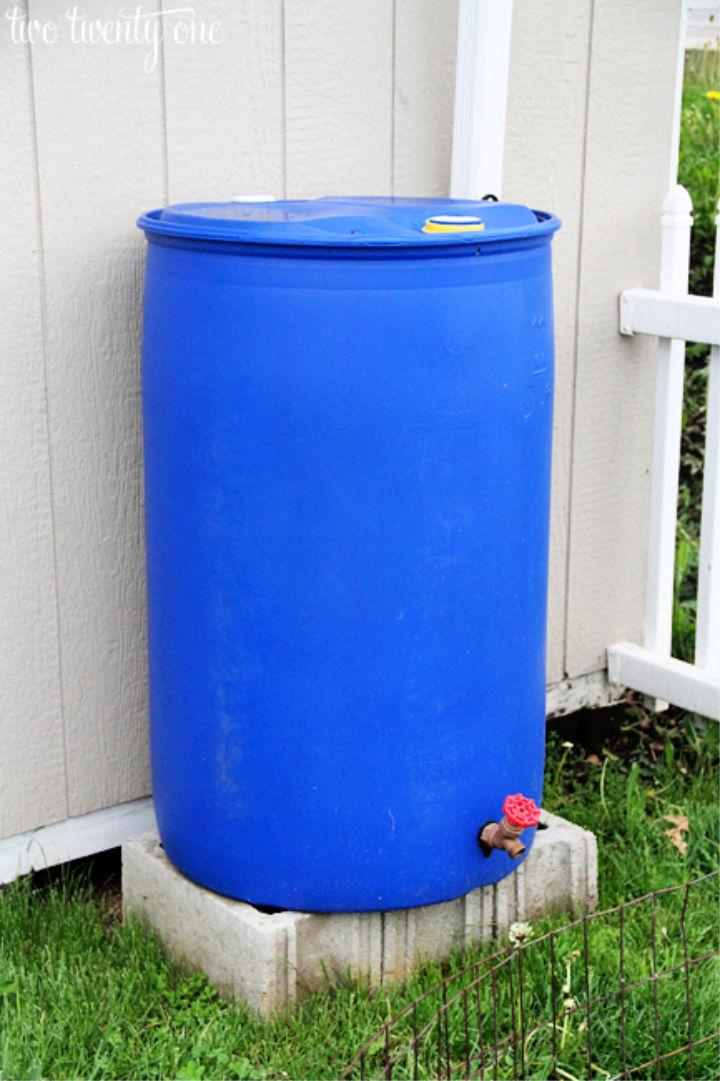
Interested in building a rain barrel for eco-friendly water conservation? Two Twenty One provides a step-by-step guide on assembling a rain barrel system to collect and utilize rainwater for your garden. With detailed instructions on selecting a food-grade barrel, installing a downspout and spigot, and setting up for optimal water flow, you’ll learn how to harness nature’s resources right in your backyard. This informative guide is perfect for gardeners who want to save on water bills and embrace sustainable living. Easy to follow and practical, it’s time to tap into rainwater harvesting with your own DIY rain barrel.
9. DIY Rain Water Barrel
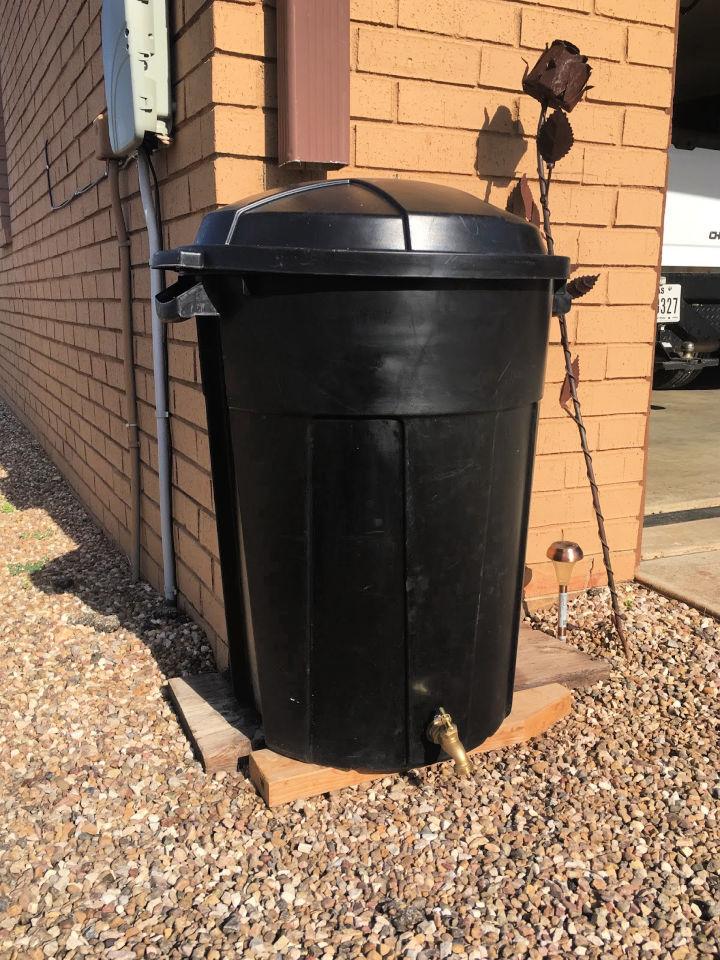
Learn how to capture rainwater effortlessly with a DIY rain barrel, a smart addition to any eco-conscious home. StewardingOurAquifer offers a straightforward guide to assembling your own rain barrel using simple materials like a plastic garbage can and a spigot. Ideal for garden watering, this setup can also be adapted for drinking water with proper purification. Keep debris and pests at bay with a few extra touches, such as a screen and mosquito repellent rings. Embrace sustainability and beautify your yard with a functional, customized rain barrel, contributing to water conservation in a practical way.
10. Make Your Own Rain Barrel
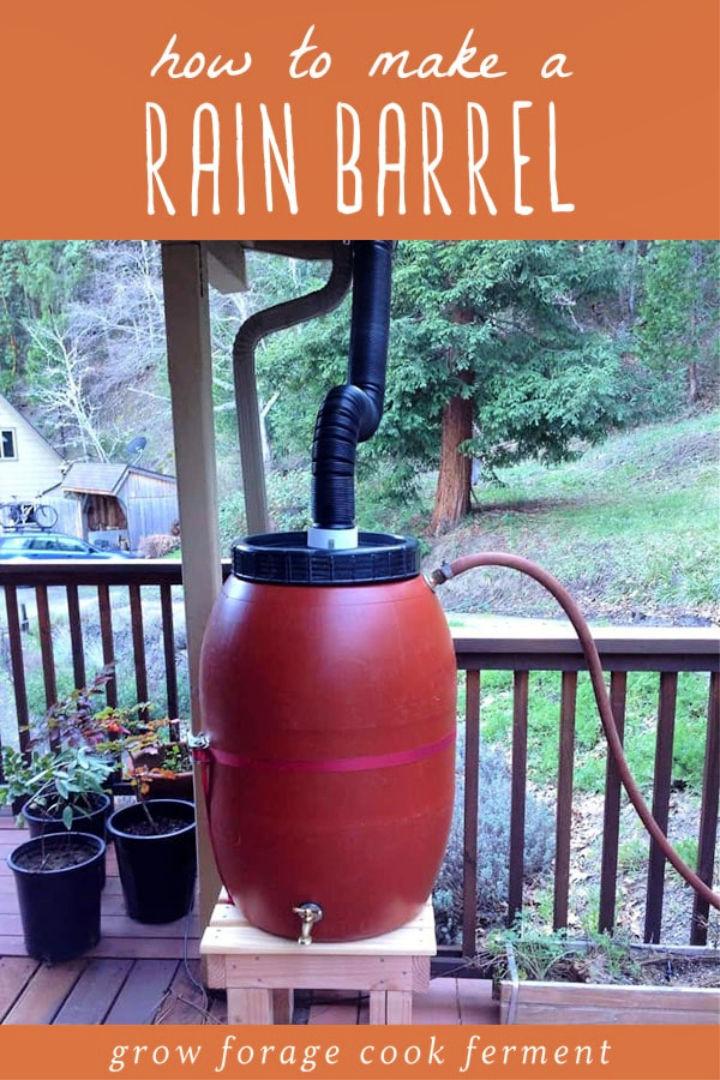
Harness the power of spring showers with a DIY rain barrel, a smart and eco-friendly way to collect rainwater for your garden and homestead tasks. Grow Forage Cook Ferment offers a step-by-step guide on building a rain barrel that’s both functional and easy to assemble. With just a few hours and simple tools, you can set up a system that provides a sustainable water source. Learn how to drill holes, install spigots, and connect your barrel to the gutter for efficient water collection. Elevate your water conservation efforts and keep your plants thriving with your homemade rain barrel.
11. DIY Rain Barrel with a Diverter
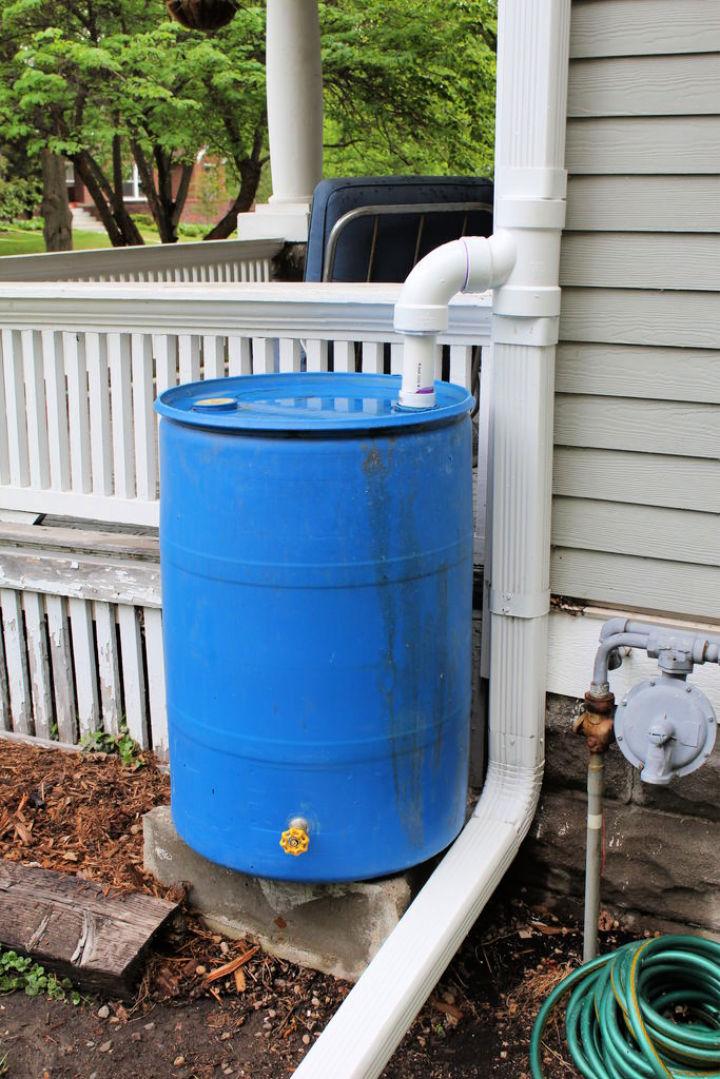
Looking to set up a rain barrel system with an effective diverter? Instructables offers a practical guide to crafting your own rainwater collection system using food-grade chemical barrels. This DIY project not only helps conserve water but also provides an efficient solution for garden irrigation. The instructions are clear, making the process straightforward and accessible. Equip yourself with the knowledge to make a rain barrel that suits your needs while contributing positively to water conservation efforts.
12. How to Make a Rain Barrel for Garden
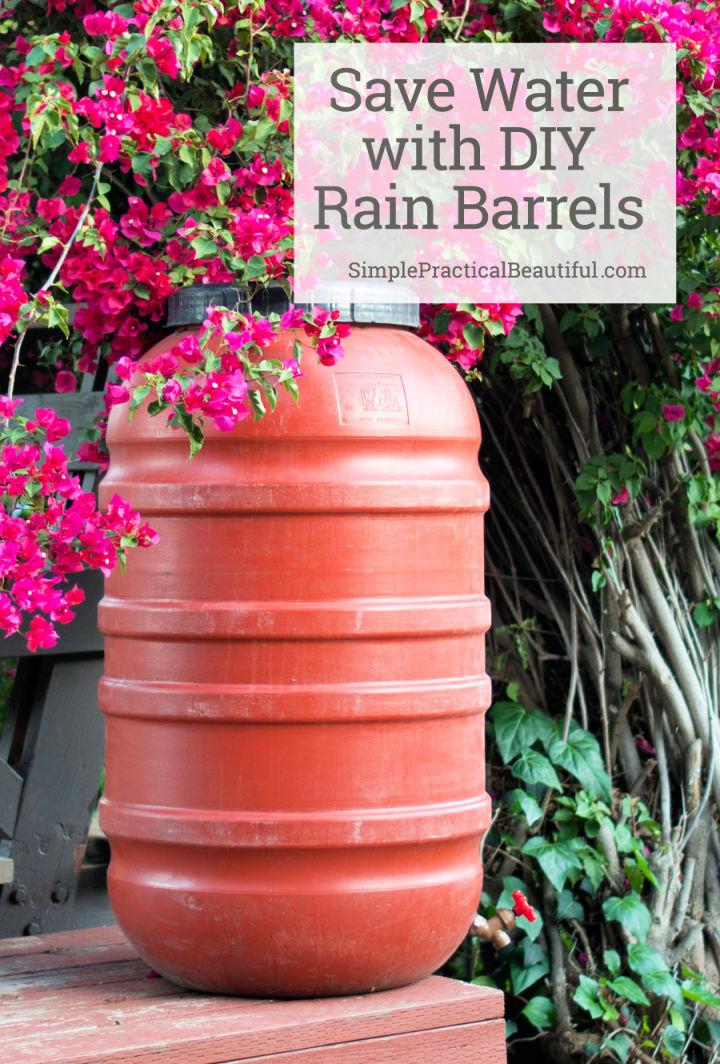
Learn how to conserve water and support your garden with a DIY rain barrel following the simple and practical guidance from Simple Practical Beautiful. Make your own eco-friendly water-saving system using a food-grade barrel, and easily install a spigot with the help of a handy kit.
This project helps you collect rainwater efficiently, ensuring your plants thrive even during dry spells. The instructive content leads you through the process step by step, ensuring clarity and ease for all readers eager to embrace sustainable gardening practices. Get ready to elevate your garden’s resilience with a homemade rain barrel and enjoy the benefits of harvesting nature’s gift.
13. DIY Wooden Rain Barrel
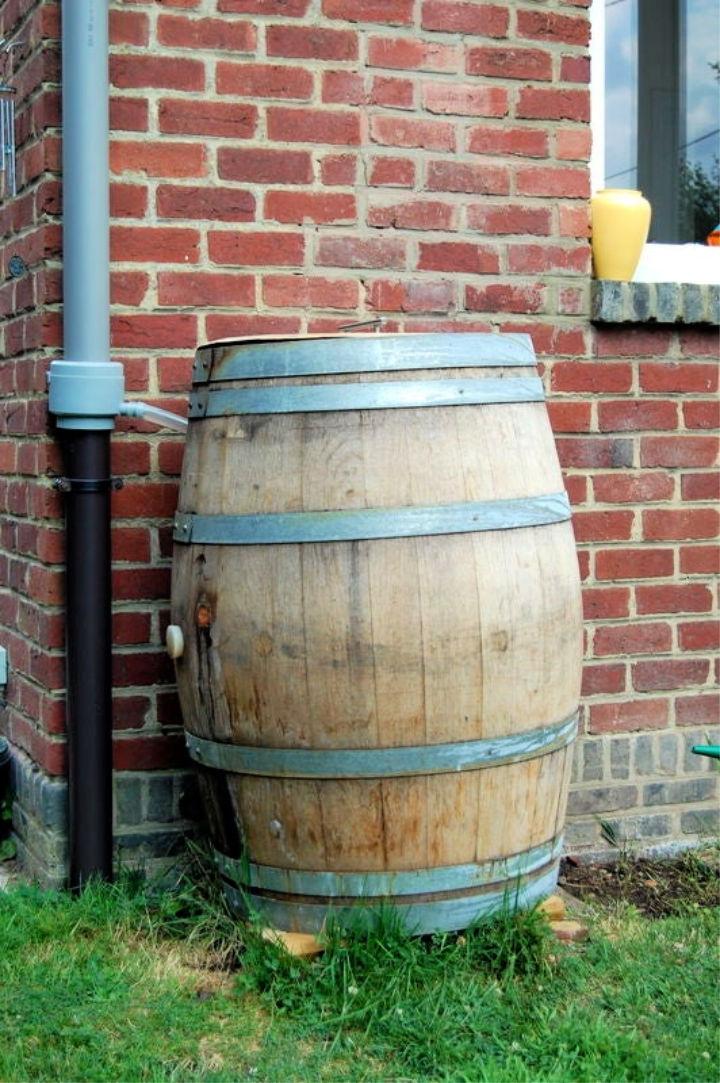
Transform your outdoor space and practice sustainable living by collecting rainwater with a wine barrel. Instructables offers an ingenious DIY guide for those who value aesthetics and functionality in their garden. This eco-friendly project allows you to repurpose a charming wine barrel into a rainwater collector, seamlessly blending with your terrace or garden design.
Simple, efficient, and visually pleasing, this method is an excellent way to conserve water and reduce reliance on municipal sources for your plants’ needs. With step-by-step instructions, you’ll find it easy to set up your wine barrel rainwater system, making every rainfall an opportunity to nourish your greenery and contribute to environmental conservation.
14. Ultimate DIY Rain Barrel
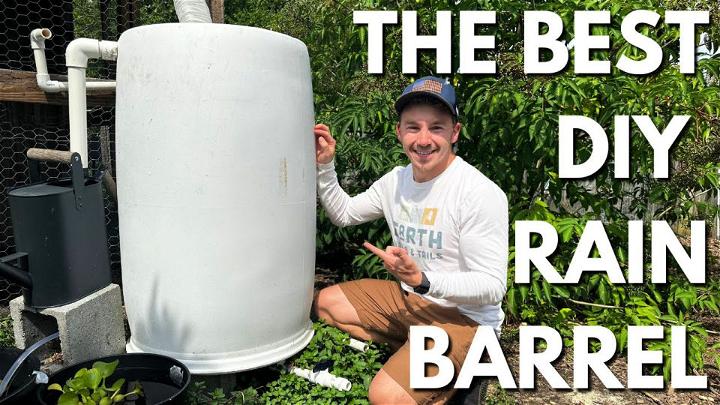
Looking to build a DIY rain barrel that’s both cost-effective and easy to assemble? Earth, Nails & Tails Homestead & Gardening provides a comprehensive, step-by-step guide on YouTube, showing you how to convert a food-grade drum into a sustainable rainwater collection system for your garden or farm animals.
With a total investment under $40, you can make a 55-gallon rain barrel that’s beginner-friendly. The tutorial covers materials, tools, location, and setup to ensure your success. Plus, tips on protecting your barrel from the elements are included for longevity and clean water. Check out the video to start harnessing the benefits of rainwater today.
15. Rustic DIY Rain Barrel
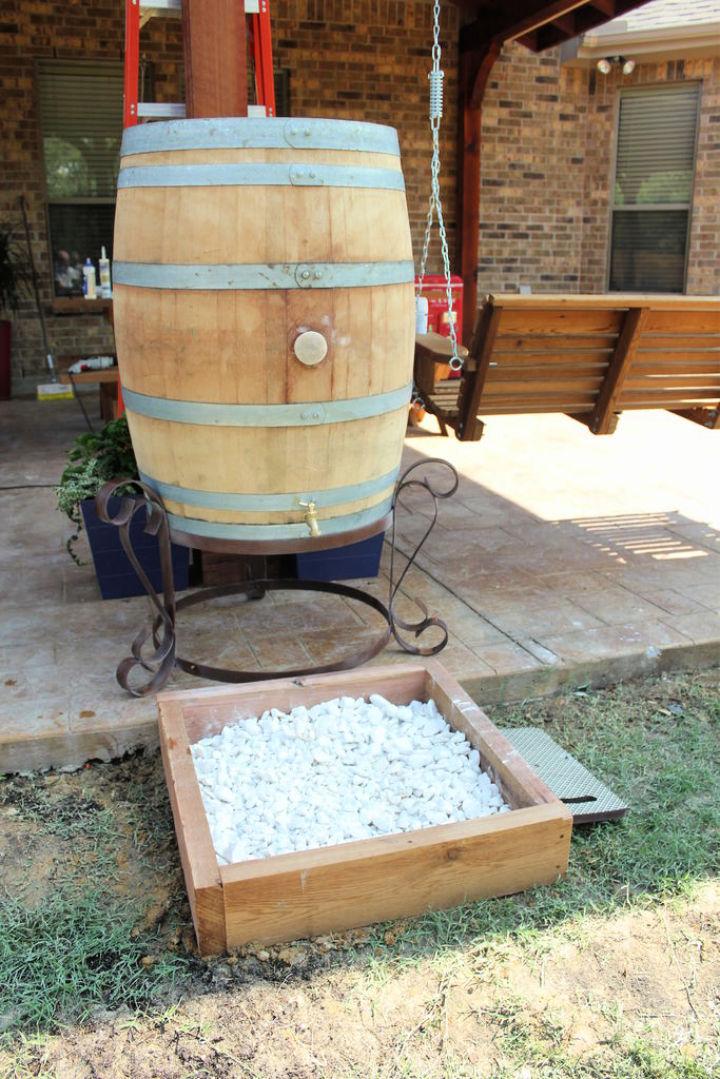
Building a rustic rain barrel is an excellent way to conserve water and add a charming touch to your outdoor space. Instructables offers a step-by-step guide that walks you through the process of assembling a functional rain barrel with a vintage aesthetic. The instructions are clear, making it easy for anyone to follow along.
With this project, you’ll learn how to collect rainwater efficiently, which is beneficial for watering plants or general household use. It’s a practical endeavor that not only contributes to sustainability but also provides an engaging crafting experience. Dive into this eco-friendly DIY and give your back patio a functional upgrade while doing your part for the environment.
Conclusion:
In conclusion, exploring 15 easy DIY rain barrel ideas to make your very own rain collector is a fantastic way to contribute to sustainable living and water conservation. With a variety of styles and designs to choose from, crafting a rain barrel can be not only an eco-friendly project but also a fun and rewarding weekend activity. By equipping yourself with the right knowledge and creativity, you can turn rainwater collection into an efficient, cost-effective, and aesthetically pleasing addition to your home. Let these inspirations guide you in making an eco-conscious choice that benefits both your garden and the planet.
Related Ideas for DIY Gardening
- 17 Easy DIY Garden Tool Storage Ideas
- 10 Ways to Build Your Own DIY Worm Farm
- 10 DIY Grow Tent Plans – Build Your Own DIY Grow Box
- DIY Potting Bench Plan
- 50 Walkway Ideas To Install By Yourself Cheaply
- 12 Best DIY Concrete Patio Ideas That beginners Can Do
- DIY Cedar Planter Box Under $5
- 25 DIY Mason Jar Herb Garden Ideas for Indoor
- 42 Hummingbird Flowers That Can Attract Them To Your Garden

